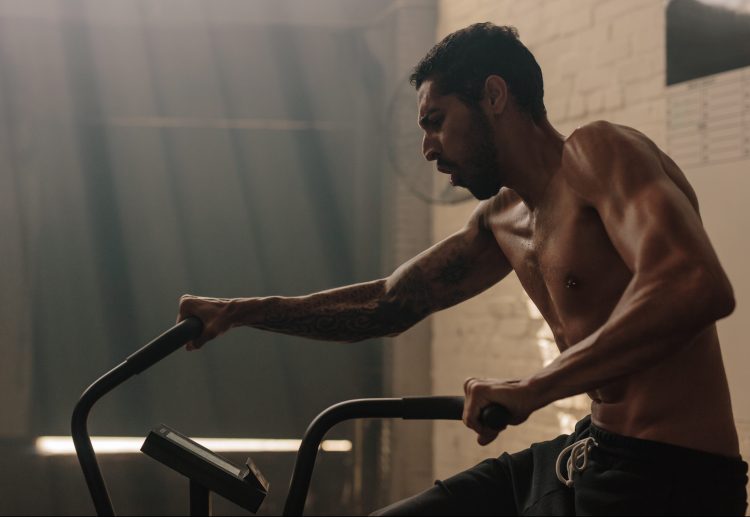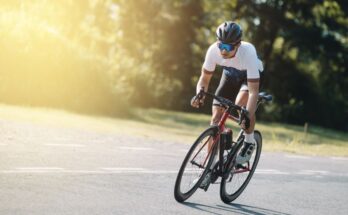[ad_1]
The air bike has risen in popularity over recent years. One of the stars of the show on the CrossFit scene, it’s an excellent cardio machine for pushing your lung capacity and general endurance to the limits. But how many of us know how to use an air bike properly?
One major advantage of the air bike is that it’s not particularly technical. While good technique will allow you to be more efficient, you’ll get a solid, lung-busting workout however you go about it. That’s unlike machines like rowers and ski machines, for which proper form is a more integral factor.
Related content:
How does an air bike differ from a regular bike?
“The air bike involves moving your arms,” says Kahn Porter, a seven-time CrossFit Games athlete, “which works more muscle groups, making it more challenging.” He adds that you can increase the resistance on stationary bikes, whereas the air bike only has one setting.
That’s not say air bikes aren’t challenging. Moving the arm handles and pedals simultaneously moves the flywheel, positioned at the front of the bike. The quicker you move the handles and pedals, the faster the flywheel moves – and the more air the blades of the flywheel have to contend with.
This, in turn, increases the resistance on the movement. Moving slowly, on the other hand, equates to little resistance.
“The air bike is a machine everyone loves to hate,” says Porter, “as doing intervals and sprints on them will leave even the fittest people in the world rolling round on the floor afterwards.”
Common air bike mistakes
“When you fatigue on an air bike, which can happen very quickly, people will often start to drop their chest as they get more tired,” add Porter. Instead, focus on keeping an upright torso, which will allow you to breathe more efficiently. It might be tough when you’re feeling worn down by the bike, but in the long run it will help.
“Another thing people do when they get tired is rock excessively side to side to involve more of their upper body,” says Porter, “most likely when their legs are feeling heavy and struggling to keep their pace up.” Form does deteriorate when you’re fatigued, but it’s important to avoid rotating and keep your chest as open as possible.

Your air bike technique will inevitably start to deteriorate as you fatigue, but try to get into a rhythm with each push and pull | Image: Shutterstock
Effective air bike technique
- Ensure you have the correct set-up by having your seat at a height that suits your leg length and far enough forwards so you’re not reaching too far for the handles.
- When your leg is extended it should still have a slight bend and not be fully locked out. “The seat should also not be set too low,” says Porter, “as the quads will overwork due to the hamstrings not being able to fully extend.”
- From here, push down on the pedals through the balls of your feet. As the pedal circles round, lift your heels up to engage your hamstrings.
- With your arms, the emphasis is on pulling one handle towards you, while pushing the other away. Try to get into a steady rhythm.
- As you get more fatigued – and you will get fatigued – your breathing is likely to get a bit out of control, so make sure you’re keeping that rhythm to help manage your heart rate as much as possible.
The post How To Use An Air Bike appeared first on MensFitness.
[ad_2]
Article link
[recent_products limit=”4″ orderby=”rand”]



